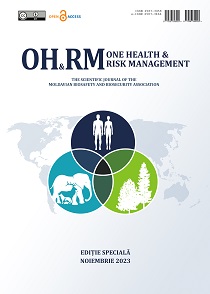Abstract
Introduction. In the oral cavity, where Candida spp. is the most common fungus, oral candidiasis (OC) is particularly critical due to its high prevalence across all ages and genders. OC is characterized by oral discomfort, pain, a burning sensation, parageusia, and aversion to food. It is usually associated with factors such as age (childhood or older age), smoking, diabetes mellitus, nutritional disorders, endocrinopathies, immunosuppressive conditions, and malignancies. Nevertheless, and importantly, OC can also be observed in 60% of the healthy population and non-immunocompromised individuals. Biofilm production is considered a potential virulence factor of some Candida species. Therefore, understanding the biofilm behavior of Candida albicans and its closely related species is crucial for the development of effective preventive measures for oral candidiasis. Candida spp. possess the ability to grow under diverse oral environmental conditions (e.g., unhygienic dentures, xerostomia) and/or systemic factors. The presence of dentures overlaid with proteins and other oral components encourages the development of Candida biofilms and denture stomatitis. The existence of extracellular polymers and a different cellular phenotype, called sessile, is an important feature in the structure of these microbial communities. Biofilms impede the actions of the immune system and other defense mechanisms, rendering them resistant to current antifungal treatment.
The aim of the current study has been to compare the biofilm production capacity of oral isolates of C. albicans and C. glabrata obtained from infected patients.
Material and methods. A total of 28 oral isolates of C. albicans and 19 of C. glabrata were included in the study. For routine identification, Candida isolates were cultured on Sabouraud Dextrose Agar (Merck, Darmstadt, Germany) under aerobic conditions for 24 hours at 37°C. Standard mycological identification procedures were conducted at 30°C for 48 hours using the chromogenic medium CHROMagar Candida (CHROMagar Microbiology, Paris, France). Biofilm production by Candida spp. strains was quantitatively determined using the micr otitration method, with all biofilm assays conducted in triplicate.
Results. Candida spp. are dimorphic fungi, and hyphae serve as a crucial structural component of their biofilms. The presence of hyphae in biofilms contributes significantly to the overall architectural stability of the biofilm and plays a key role in adherence during normal biofilm development and maintenance. Out of the 28 strains of C. albicans and 19 of C. glabrata isolated from oral cavities, 24 (85.7%) and 13 (68.4%) strains, respectively, produced detectable biofilms (OD>0.112). Regarding the biofilm status, 18 (75.0%) isolates of C. albicans and 7 (53.8%) isolates of C. glabrata produced strong biofilms (OD>0.220), 4 isolates (16.7%) and 5 (38.5%) produced moderate biofilms (OD 0.112-0.220), and 2 (8.3%) and 1 (7.7%) isolates produced weak biofilms (0.056<OD≤0.112), respectively.
Conclusions. There are significant differences in biofilm production between C. albicans and C. glabrata isolates. It is crucial to consider these distinctions when testing the anti-biofilm activity of antifungal agents or other virulence factors in vitro. The ability for biofilm development may contribute to C. albicans and C. glabrata maintaining their oral ecological niches as commensal microorganisms.
|
 Views: 525|
|
Views: 525|
|
This work is licensed under a Creative Commons Attribution 4.0 International License.

